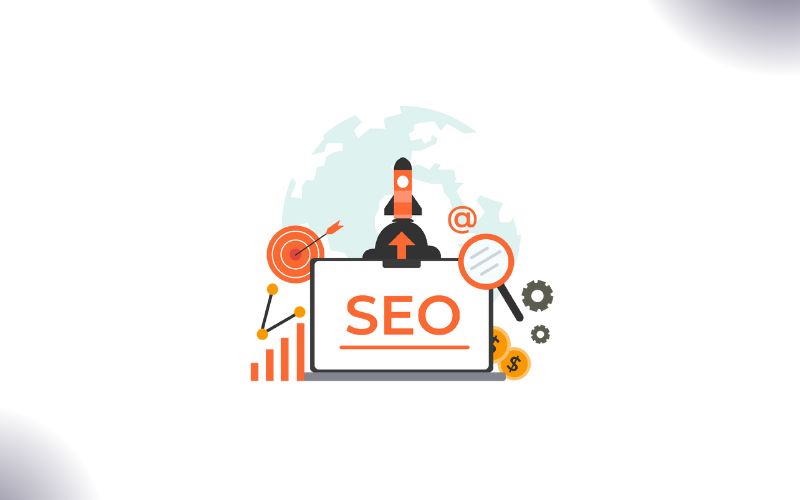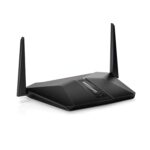In today’s competitive digital landscape, getting traffic to your website is a top priority for businesses. However, not just any traffic will do; it must be targeted traffic, meaning visitors who are genuinely interested in what your site offers. That’s where SEO (Search Engine Optimization) comes into play. By using innovative SEO techniques, businesses can attract visitors who are more likely to engage with their content, convert into customers, or fulfill other goals that the business has set.
The Importance of Targeted Traffic
Before diving into SEO techniques, let’s first understand why targeted traffic is essential. Getting visitors who land on your website with no real interest in your products or services is a waste of time and resources. On the other hand, attracting the right kind of traffic—people who are actively searching for what you offer—leads to:
- Higher conversion rates: The more relevant the traffic, the higher the likelihood that visitors will take desired actions like making a purchase or signing up for a newsletter.
- Better user engagement: Targeted traffic tends to spend more time on your website, engage with your content, and navigate to different sections of your site.
- Improved ROI: Whether you’re spending on content creation, SEO, or pay-per-click advertising, investing in targeted traffic results in a better return on investment (ROI) since these users are more valuable to your business.
With these points in mind, let’s explore innovative SEO techniques that help drive targeted traffic.
Keyword Research: Laying the Foundation
Keyword research is still a critical part of any SEO strategy. However, today’s search engines are much more advanced than they were a decade ago. Instead of just focusing on single keywords, search engines now consider the context, intent, and relevance of a query. That’s why it’s essential to adapt your keyword research accordingly.
Focus on Long-Tail Keywords
Long-tail keywords are phrases that are more specific and usually longer than general keywords. For example, instead of targeting the keyword “shoes,” a long-tail keyword might be “best running shoes for flat feet.” Long-tail keywords often have lower search volumes, but they are far more targeted. People searching for these terms are usually further along in the decision-making process, making them more valuable to your business.
Analyze Search Intent
It’s not enough to simply know what keywords people are searching for; you also need to understand why they are searching for them. Are they looking for information? Do they want to make a purchase? Are they comparing options? By understanding the intent behind a search, you can better tailor your content to meet the needs of your audience, which increases the chances of converting visitors.
Competitor Analysis
Analyzing what your competitors are doing can provide valuable insights into which keywords are driving traffic to their websites. Tools like SEMrush or Ahrefs can help you identify the keywords that are working for your competitors, which you can then incorporate into your own strategy.
On-Page SEO: Optimizing for Search Engines and Users
On-page SEO refers to the optimizations you make directly on your website to improve its rankings. This includes optimizing your content, meta tags, images, and URLs to make them more search-engine-friendly.
Crafting High-Quality Content
The most important factor in on-page SEO is the content itself. Search engines favor websites that produce high-quality, valuable, and relevant content. This means:
- Answering user questions: Create content that directly answers the questions your audience is asking.
- Providing in-depth information: Instead of shallow, short-form content, focus on producing comprehensive guides, tutorials, or articles that cover topics in detail.
- Incorporating multimedia: Use images, infographics, videos, and other forms of media to enhance your content and improve user experience.
Optimizing Meta Tags
Meta tags, such as the title tag and meta description, play a critical role in SEO. While they don’t directly affect rankings, they significantly impact click-through rates (CTR). A well-crafted title and meta description will entice users to click on your listing over others in the search results.
- Title Tag: Include your target keyword naturally in the title tag. Ensure that it accurately reflects the content of the page and is enticing for users.
- Meta Description: Write a concise yet compelling description that provides a brief overview of what users can expect from your content. While Google doesn’t always use your meta description verbatim, it’s still important to craft one that is relevant and engaging.
Structured Data and Schema Markup
Structured data and schema markup help search engines understand the content on your website better. By incorporating these into your pages, you can enhance your listings in search results with rich snippets, which may include additional information like ratings, reviews, prices, and more. This makes your listing stand out and can improve your CTR, driving more targeted traffic to your site.
Technical SEO: Ensuring a Smooth Experience for Users and Search Engines
While content is king, technical SEO ensures that your website is easy to navigate and accessible to both users and search engines.
Improving Page Speed
Site speed is a ranking factor that can’t be ignored. Slow-loading pages frustrate users, leading to higher bounce rates and lower engagement. Google also considers page speed when determining rankings, so it’s essential to ensure your website loads quickly.
- Compress images: Large images can significantly slow down your page. Use tools like TinyPNG or ImageOptim to compress images without losing quality.
- Minimize code: Reduce unnecessary code and scripts to make your website leaner and faster.
- Use a content delivery network (CDN): A CDN stores your website’s files in multiple data centers worldwide, ensuring faster load times by serving content from the location closest to the user.
Mobile Optimization
With the majority of users now accessing websites from mobile devices, optimizing for mobile is no longer optional. Google uses mobile-first indexing, meaning it primarily looks at the mobile version of your website when determining rankings.
- Responsive design: Ensure your website adjusts and functions properly on all screen sizes, from smartphones to desktops.
- Mobile-friendly content: Make sure your content is easy to read on smaller screens by using shorter paragraphs, larger fonts, and buttons that are easy to tap.
Fixing Crawl Errors
Crawl errors occur when search engines have trouble accessing certain pages on your website. Regularly checking for and fixing these errors ensures that all of your important pages are indexed and can be found by users.
Off-Page SEO: Building Authority and Trust
Off-page SEO focuses on factors outside of your website that influence your rankings. The most important aspect of off-page SEO is building backlinks, which are links from other websites pointing to your site.
Building High-Quality Backlinks
Not all backlinks are created equal. A link from a high-authority, relevant website carries far more weight than multiple links from low-quality sites. Here are some strategies for building high-quality backlinks:
- Guest posting: Writing guest posts for reputable websites in your industry is an effective way to build backlinks. Make sure the content you provide is valuable and relevant to the audience of the host site.
- Content promotion: Once you’ve created valuable content on your website, promote it through social media, email newsletters, and outreach to other websites in your industry. The more visibility your content has, the more likely it is to attract natural backlinks.
- Influencer outreach: Connect with influencers and industry experts who can link to your content or share it with their followers.
Social Media and SEO
While social media doesn’t directly impact search rankings, it plays a role in increasing your website’s visibility and driving traffic. When your content is shared on social media, it has the potential to reach a broader audience, some of whom may link to it or share it further.
- Share your content: Regularly share your blog posts, videos, and other content across your social media platforms to increase its reach.
- Engage with your audience: The more engaged your audience is on social media, the more likely they are to visit your website and share your content, leading to more visibility and potential backlinks.
Local SEO: Attracting Nearby Customers
For businesses with a physical location, local SEO is crucial for driving targeted traffic. Local SEO focuses on optimizing your online presence to attract customers in your geographical area.
Optimizing Google My Business
Claiming and optimizing your Google My Business (GMB) listing is one of the most important steps in local SEO. A complete and accurate GMB profile helps your business show up in local search results and on Google Maps.
- Ensure your NAP (Name, Address, Phone number) is consistent: Across all online platforms, your business’s name, address, and phone number should be consistent.
- Collect reviews: Positive reviews on your GMB listing not only build trust with potential customers but also help improve your local rankings.
Local Citations
Local citations refer to any online mention of your business’s name, address, and phone number. These citations can appear on local business directories, websites, and social platforms. The more consistent and accurate your local citations are, the better your chances of ranking in local search results.
Conclusion
Driving targeted traffic to your website requires a combination of innovative SEO techniques that are tailored to your audience’s needs. By focusing on thorough keyword research, optimizing your website for both users and search engines, improving your technical SEO, and building strong backlinks, you can attract visitors who are genuinely interested in your products or services.
One key takeaway is that SEO is not a one-time effort; it requires continuous optimization and adaptation to changes in search engine algorithms and user behavior. However, by staying ahead of the curve and employing these innovative strategies, you can ensure that your website remains a valuable tool for driving targeted traffic.
By partnering with an offshore SEO company, businesses can take advantage of expert services at a lower cost, making it easier to implement advanced SEO techniques without the need for a large in-house team.







